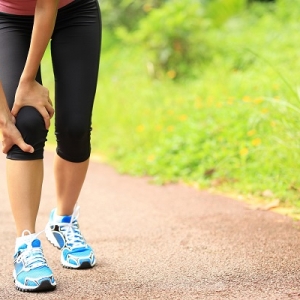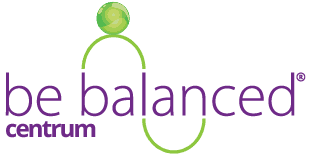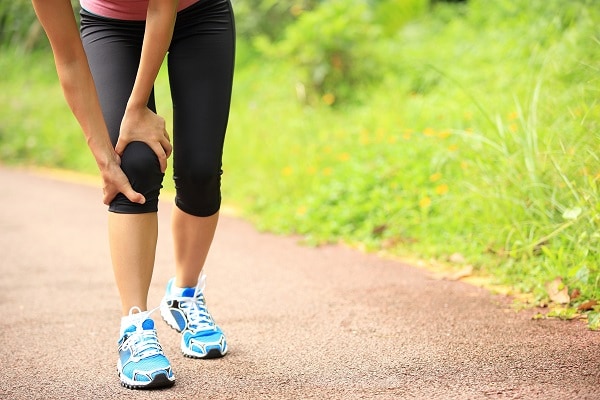Runner’s knee – knee pain and the key to successful treatment
 A primary problem in the knee is actually very rare. Since the foot has the connection to the ground and the hip to the upper body girdle, the knee is left in the middle of the two, receiving forces from both directions. Given its position, it’s also not connected to any ‘’fixed’’ point, making it quite unstable and prone to injury when there are muscle imbalances and de-centered positions in the hips or feet.
A primary problem in the knee is actually very rare. Since the foot has the connection to the ground and the hip to the upper body girdle, the knee is left in the middle of the two, receiving forces from both directions. Given its position, it’s also not connected to any ‘’fixed’’ point, making it quite unstable and prone to injury when there are muscle imbalances and de-centered positions in the hips or feet.
Therefore, when there is pain the knee, it’s usually not a result from an actual knee problem, but from those joints that are responsible for its position, i.e. the hip/pelvis complex or feet. This kinesiological relationship is used in the treatment of knee pain as well, where it isn’t possible to rid of knee pain or treat it by just circling an ultrasound around the knees, or by strengthening a thigh muscle, but by also including correct activation of muscles around the feet and hips, to ensure that the knees are held in a properly aligned position during movement.
Knee pain is one of the most common runners’ problems. Patellofemoral syndrome – also known as runner’s knee, is the leading cause of knee pain, around or under the kneecap, in runners, athletes (especially female) and individuals who do a lot of jumping or running activities. However, it has been noted in some research that even prolonged sitting may cause runner’s knee therefore it also should not be forgotten that people who spend around 4-6 hours a day sitting may suffer from knee pain just as strongly as runner’s. The exact definition of runner’s knee is patellar (kneecap) pain during activities such as walking on the stairs, prolonged sitting and jogging, kneeling or squatting, and pain on palpation around the bony landmarks of the knee. Also, it is important to cancel out ligamentous or meniscus injuries in the knees and examinations of these structures should be negative.
Even though there still lays a lot of controversy in the diagnosis and cause of runner’s knee, the majority of research proves that it’s ‘’mechanical’’ and due to mal-alignment – meaning a ‘’bad’’ position or stereotype in the alignment of the knee, mainly caused by either muscle imbalances or poor biomechanics. In one study on female athletes, it was consist that those with the patellofemoral pain syndrome demonstrated a decrease in abduction and external rotation range in the hip, and knee extension strength of the affected side, in comparison with healthy patients. It is safest to say that knee pain treatment should always be therefore an individual approach and cannot be the same in everyone, even those who share similar symptoms.
There are many other conditions that are related to runner’s knee, such as those that cause a decreased mobility in the knee cap and joint like chondromalacia patellae, foot deformities, or inadequate rest after a leg injury and so on. At times, knee pain may start from nothing specific, and it may be just from uneven overloading – which is usually the case.
The treatment principles …
In terms of it being a mechanical cause as mentioned previously, treatment of runner’s knee lies in correcting muscle imbalances and the general alignment of the lower extremities. Let’s take a closer look at our joints and how they may affect the knee position…
When walking and running, there is a phase during our movement where we stand completely on one leg, while the other swings, and another phase where both legs are on the ground with our weight divided. When we are in a one-legged stance, what could happen when there is a muscular imbalance is that we let the leg hang at the hip (as in the photo above), or we excessively rotate our leg up and out to clear the ground, and this would occur in every step. Usually, we have an asymmetry where one side is stronger than the other, which is why joint problems usually occur on one side first. When the problem appears symmetrically, it becomes a question of the person’s general posture, hyper-mobility and/or weakness in postural stabilizers.
Feet: When running, it’s very important to use the entire foot sole and runners quite often forget to use the toes for push-off. We are wearing shoes for the majority of the time and do not use our toes and deep foot muscles at all. Imagine it like wearing a pair of thick gloves on your hands for days without being able to move your fingers around, your hands fine motor skills would surely gradually worsen. The feet are the same. While running, try to grasp and push off the ground with your toes and spread them wide. This can help to prevent the ankle from falling inwards, which disturbs the normal mechanics in the knee joint by forcing it to also fall inwards with every step.
Hips: When the muscles around the hip joint are activating in balance, they keep the hip held in the correct position for support and this improves the stability of the hip/pelvis complex and knees during jogging. It is known that the development of runner’s knee includes a decrease of abductor and external rotator strength of the muscles of the hip, but also knee extensor strength (especially eccentric strength) and an imbalance of the quadriceps muscles (vastus medialis and lateralis) which are all connected to the knee and the hip. Therefore, if we want to improve the activation of these muscles and the biomechanics of our legs during activities, we always need to implement hip muscle strength and stability exercises. Thus, we re-train the deep stabilizers of the hip, to prevent further overloading the muscles that are larger and overused.
Experience this good hip strengthening exercise: From the four-point position, push one knee forward between your palms, and then sit on its side (as shown in the picture below). Move your hands a bit forward so they are about 20cm in front of the knee. You should feel a stretch on the outside of the hip. To engage the muscles, lift the opposite hand as if you wanted to reach for something out in front of you and at the same moment you should feel that the muscles of the hip on side are involved and that the thigh is heavily leaning against the ground. If you do not feel that nor the stretches then you’re doing something wrong – either you have too much weight on your other hand, or maybe a large hip muscle weakness that they can’t automatically engage. In that case, push your knee down actively into the ground and try to lift your hip up slightly (1cm is enough), making sure you keep your back and pelvis alignment straight without side-bending.
Trunk and pelvis: Excessive rotation of the pelvis and / or its displacement from side to side makes running very uneconomical and uses too much energy. The cause of this is usually the weakness of the deep stabilizing muscles of the spine and core, which don’t adequately hold the chest and pelvis positions correctly. To read more about this, refer to our article on the DNS method here.
Other common causes of knee pain
ITBS (iliotibial band syndrome): the pain is localized more on the outside of the knee, especially when walking on stairs or downhill, or in bending of the knee more than 30 degrees. This pain is from the pull of the ligament/muscle strip on the outside of the thigh. This muscle connects the knee to the outside of the hip and is one of the muscles responsible hip stability. However, due to its position, it often works significantly more than it should and pulls a lot on the knee laterally. ITBS is usually a small inflammation due to this overuse and is quick to treat using specific exercises, stretching (e.g. using a foam roller) and taping/stretching.
Damage of soft tissue structures around the knee: This includes cartilage damage, inflammation of tendons of muscles that are connected to the knee, such as quadriceps tendonitis, and muscle pulls that all effect the stability of the knee, decrease its mobility by creating stiffness and tightness, and change the mechanics of the whole lower extremity during movement.
We offer…
At our clinic, we offer a full kinesiological assessment along with a running gait analysis (that includes video and photo processing), to specifically analyze your running style and the areas in where and how you can improve, before you begin to develop a painful knee syndrome, or to rid of your existing problems and get you back to your running routine. Read more here.
Physiotherapy, at the hands of our experts, can help you overcome and deal with chronic or acute knee pain, or prevent overuse of your joints if you are uncertain about your movement stereotype, or perhaps have a history of leg injuries and so on. Do not hesitate to Contact us for an appointment or for further information.

